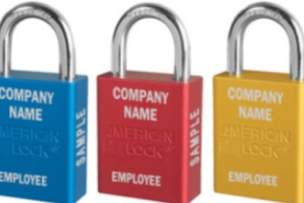Fit testing can help ensure your employees are getting the most out of their hearing protection.
Protecting your workers’ hearing means more than just supplying earplugs—to prevent hearing loss, you may also need to train workers in how to wear them.
Using earplugs seems easy enough. After all, you can find them in most local pharmacies and hardware stores, and instructions are often right on the box. But Clifford Frey, CIH, a technical service specialist with 3M Company, says getting earplugs to fit correctly—so that they offer the amount of hearing protection specified—sometimes requires training. He talked about hearing protection fit testing during a recent webinar offered by MSC.
REAT Test: The Gold Standard in Hearing Protection Safety Testing
The level of hearing protection offered by earplugs is indicated by an NRR (noise reduction rating) level. Frey says the rating is reached through real-ear attenuation at threshold (REAT) testing. Using a method similar to a hearing test, REAT testing takes place in a laboratory and measures what test subjects hear with ear protection and then without ear protection. The difference between the two numbers becomes the NRR rating.
“It’s a test that has been around for a long time,” says Frey. “It’s considered the gold standard. … If you have time to do the test, this is the most definitive method.”
Frey notes, however, that REAT results are for tests undertaken in a controlled laboratory environment, with ear protection inserted by trained technicians. Real-world conditions are much different, says Frey.
“Some employees are quite skilled at it and others are really completely unable to properly insert earplugs,” he says. “When we do the same testing with a subject-fitted type of approach, we see a much wider range of variability.”
How Testing Has Impacted OSHA’s Hearing Protection Requirements
Knowing that actual workplace conditions create radically different REAT test results means that using the NRR ratings on earplugs is not a reliable way to ensure employees are getting the level of hearing protection they need.
“OSHA (Occupational Safety and Health Administration) has been aware of this divergence between the laboratory-derived number and what is happening in the real world,” Frey says. Since the hearing protection standard had already been published, Frey says the agency decided to issue a compliance directive.
According to Frey, the directive says companies should “derate” hearing protectors by 50 percent–that is, to cut the NRR rating in half. If the resulting amount of protection gets employees below the exposure limit, then companies would not be subject to fines for failure to implement engineering controls.
So if the unprotected exposure level is 100 decibels, and the worker uses earplugs with an NRR rating of 30, their protected exposure would be 85 decibels, only 15 decibels less.
Hearing Test Results May Vary
How variable are NRR ratings? Test results differ between fittings on the same subject, between subjects and between laboratories, says Frey.
One study found that of about 150 employees using earplugs with an NRR of 33 decibels, the mean PAR (personal attenuation rating–the amount of actual hearing protection received by an individual when the earplugs were used) was just 26 decibels. But PAR levels ranged from as low as 6 to as high as 42, meaning that while some employees were not getting the recommended level of hearing protection, others were getting too much protection.
Frey says too much protection can be a problem, too.
“If the employee is in a workplace where all they need is 13 decibels of protection to get down to a safe level and they’re getting 38, or 39,” Frey says, “when they have to communicate verbally with someone, they’re going to be taking their hearing protectors out because they can’t hear anything. And then they’re at zero decibels of protection.”
“This ear fit testing really is a unique training opportunity to help employees insert their hearing protection properly.”
Fit Testing for Hearing Protection: A Personalized Approach
All the variability in test results and real-world results led to what Frey calls a “revolution in occupational hearing protection”—hearing protector fit testing. The testing offers a more personalized approach to assessing the performance of hearing protectors.
Field Attenuation Estimation Systems (FAES), or “fit testing,” is now recognized as a best practice, says Frey. It gives a direct measurement of noise reduction offered by a particular piece of hearing equipment used by a particular person.
During the test, an employee inserts the hearing protection, which includes a small dual-microphone assembly with internal and external microphones. Using a computer system, multiple frequencies of sound are played simultaneously. The microphones determine what sounds make it through the hearing protection.
Frey says the test doesn’t need to be done in a lab and can take place in an average conference or meeting room.
“Most of the testing time is in recruiting the employee, explaining what’s happening to them and the actual fitting of the protector in the ear,” he says. “The test itself is really no time at all.”
What level of fit testing for hearing protection has your company performed? Share your stories.





Talk to Us!
Leave a reply
Your email address will not be published. Required fields are marked *